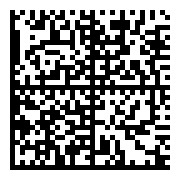Reactive Aspect Oriented Middleware
Description
Ubiquitous Computing, introduced by Mark Weiser in 1991, raised many challenges across computer science: in systems design and engineering, in systems modeling, and in user interface design. Initially the effective integration and interaction with the physical world sufficed to promote ubiquitous computing interest due to significantly increased real world visibility as well as real world control, toward ambient intelligence. But these first ubiquitous systems were often proofs of concept with a single static configuration with a priori known devices.
Web service technology is a representative means of heterogeneous system integration and communication. Process language standards, such as WS-BPEL and WS-CDL, accelerated the usability of web services in business area. However, recently emerging web service devices in ubiquitous environments still have a difficulty in coordinating their processes because of the limited computing power and storage. This research proposes a framework of event-based process enactment for ubiquitous web service devices. The framework adopts P2P architecture where devices communicate with one another via web services eventing. The schema of ECA rules and messaging protocol are presented for P2P process enactment so that service devices can interact each other and accomplish their process execution based on the ECA rules. Our proposed framework is expected to be useful in ubiquitous service environments since it enables a scalable and light-weighted process enactment through event-based web service technology.
Today mobility of users and an increasing heterogeneity of devices introduce a new significant challenge for Middleware for ubiquitous computing. We witness to a kind of inversion in the classical software methodology where the software applications levels are much more stable and stationary than the software infrastructure level. The operational environment is then tightly connected with the real world but is also partly unknown at design time and is always changing at runtime in uncountable manner.
In order to address ubiquitous services continuity (Cf. French national research project Continuum) in spite of such constraints, recent researches are moving toward an era of emergent middleware at run-time to match the current operational environment and application requirements. The research group Rainbow focus on adaptive service oriented middleware for ubiquitous computing (Cf. main recent publications). Contrary to most of the researches in this domain, Rainbow studies, proposes and validates contributions for a reactive adaptation, i.e. when the time for adaptation remain compatible with the continuous evolution of the ubiquitous environment. Its main contribution is based on the theory of the aspects of assembly (AA) to adapt reactively and independently assemblies of components in Service Component Architecture (SCA) for example.
Main objetcives of the intership
After a short survey on reactivity in adaptive middlewares, the student of this internship will study in details the evolution of Aspect-oriented system architecture and more particularly, Aspect of Assembly for Component-based architecture.
Then the student will highlight what features of such techniques are "common aspect-oriented concepts" and what features are rather target architecture-specific (for example specific to component-based architecture for AA concept).
After this first part, the student will be able to propose:
- a meta-model of service for device and event-based process
- different jointpoint models and corresponding weaving algorithms to react to appearing and disappearing services in the application. For example, jointpoint would be able to add contextual informations about the ports of the devices. In this case weaving process will be able to verify contextual constrains at runtime.
The student will also consider the algorithmic costs of each weaving process, identifying a formal performance model that will allow to compare various solutions.
To illustrate these results, some algorithms would be tested in real experiments on the CONTINUUM platform, in collaboration with the research engineer of the project.
Other information
- Number of students: 1
- Duration: 4 to 6 months with possible continuation in PhD
- Names: Jean-Yves Tigli, Stéphane Lavirotte
- Organism: Rainbow Team - I3S Laboratory
- Address: I3S Laborato, Site des Templiers - 930, Route des Colles - BP 145 - 06903 Sophia Antipolis Cedex, France
References
J.-Y. Tigli, S. Lavirotte, G. Rey, V. Hourdin, M. Riveill, Lightweight Service Oriented Architecture for Pervasive Computing IJCSI International Journal of Computer Science Issues, Vol. 4, No. 1, September 2009, ISSN (Online): 1694-0784, ISSN (Print): 1694-0814
J.-Y. Tigli, S. Lavirotte, G. Rey, V. Hourdin, M. Riveill, Context-aware Authorization in Highly Dynamic Environments IJCSI International Journal of Computer Science Issues, Vol. 4, No. 1, September 2009, ISSN (Online): 1694-0784, ISSN (Print): 1694-0814
J.-Y. Tigli, S. Lavirotte, G. Rey, V. Hourdin, D. Cheung, E. Callegari, M. Riveill WComp middleware for ubiquitous computing: Aspects and composite event-based Web services dans la revue Annals of Telecommunications, éditeur Springer Paris, ISSN 0003-4347 (Print) 1958-9395 (Online), Vol. 64, No 3-4, March-April 2009



